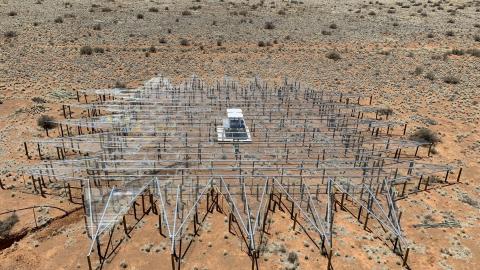
Submitted by Matthew Bothwell on Tue, 16/01/2024 - 12:43
REACH, the Radio Experiment for the Analysis of Cosmic Hydrogen, has been in development at KICC and other partner institutions around the World for over 5 years. Through COVID and many other hurdles, what has been designed to be the most accurate sensor of electromagnetic waves coming from the sky ever, has finally started operations as of December 2023.
The REACH team is now looking through the data coming out of the system in the Karoo (and transmitted half way across the globe to the HPC serves in Cambridge) trying to detect the elusive 21-cm line from atomic Hydrogen. This detection would allow researchers in Cambridge and elsewhere to unveil the mysteries of first structure formation in the Universe, accessing a new window of exploration able to take us back to just 100 million years after the Big Bang, at the times when there were not even stars illuminating the cosmos.
The challenges are many, and in truth have just started. From now on, the team will be digging through the gigabytes of data coming out of South Africa daily trying to separate the noise from the signal. In other words, trying to make sense of the data so to be able to explain what part of it is the 21-cm line., isolate it, and then study it in detail. This is a very delicate process, where many things have to work well together, almost like hand painting a beautiful picture of the early Universe.
Image credit: Saurabh Pegwal, REACH collaboration


